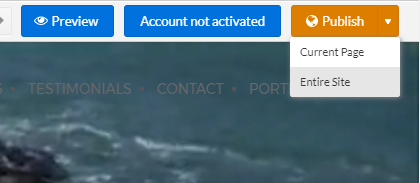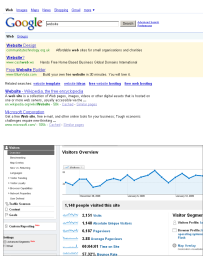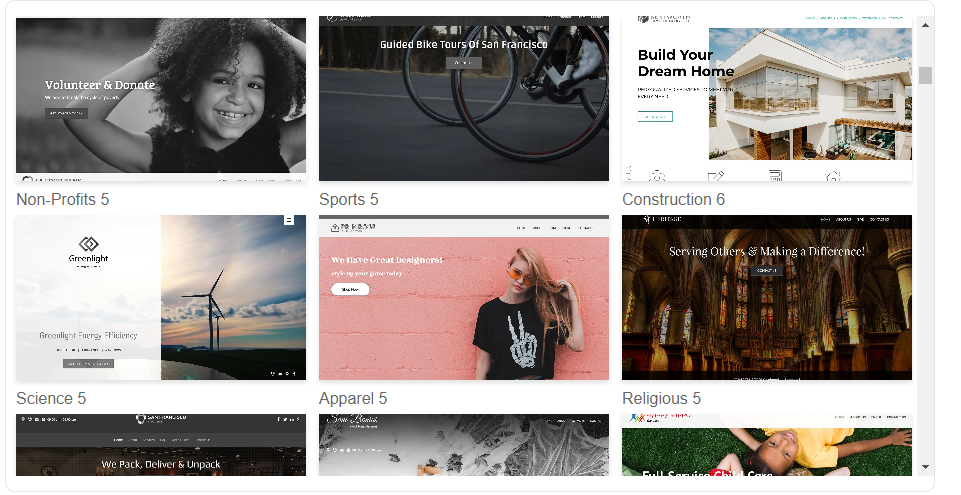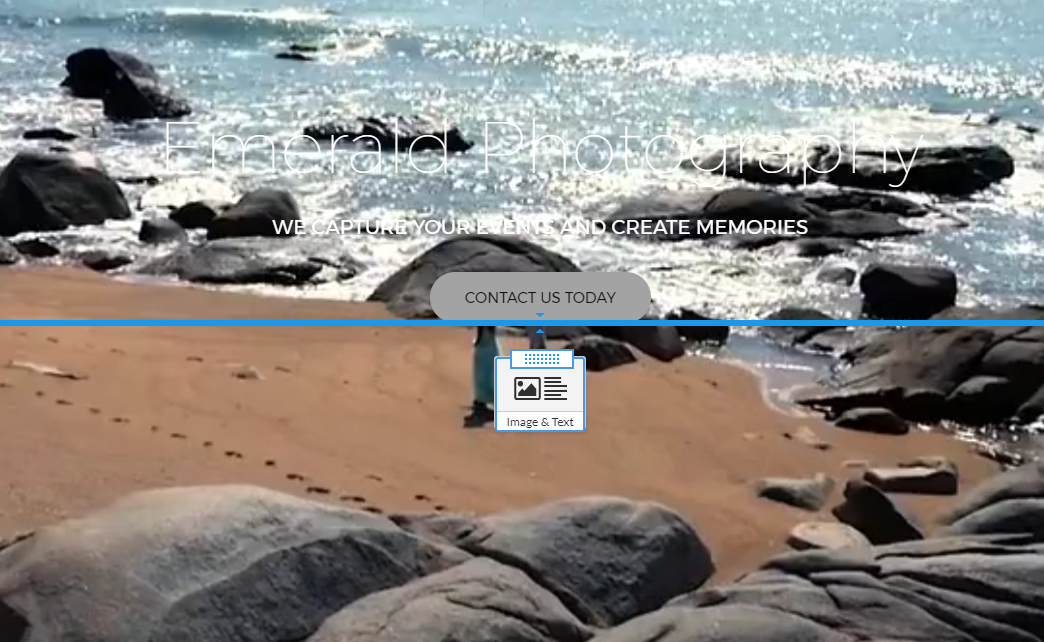Your website represents your company on the Internet. It communicates to your visitors, customers, and partners who you are, and what products or services you offer. Having a well-structured, content-rich and professional-looking website will not only provide timely and accurate information to your website visitors - it will engage them and will make them come back for more.
Building a content-rich and professional-looking website does not require any design or programming skills. You have everything needed to create, design, optimize and maintain a website completely on your own. You only need to supply good content for your site, and shape it in accordance with your website goals. Here are the most important steps in starting a successful website:
What Do I Need to Make a Website?
To get started with your website you only need a basic idea of the content and structure for your site. Make sure you have:
- The Name of your business or organization
- A Logo - in any image format, and with size appropriate for the website logo area, or feel free to use the built-in logo manager and design your own
- Some content to start with. The information you will put in your site depends on the types of visitors you expect to come to your website (customers, partners, members of your community, etc) and the purpose of the site (sell goods or services, create a company presentation, announce events, etc). Build your website content around the aspect of your business that makes you unique. Make sure your copy is simple and easy to understand.
- An initial structure of your website - what content you will place on Home page, what content will go to the inside pages. Make sure your Home page invites your visitors to explore further. Make sure your contact information is easily accessible from every page on the site.
- If unsure what content to place, or how to structure it - take a look at other successful sites in your industry. Find out what you like about their websites, jot down interesting ideas you might want to use. This will help you to get started with an initial version of your site, which you may improve down the road.
What Constitutes a Website?
A website is made up of many pages. The first page which the visitor sees when he comes to your site is called the Home page. The rest of the pages are called inside or inner pages. All pages have different content, but they share the same basic areas:
- The Logo is the image or text that spells out the name of your site, displays your corporate colors and symbols and gives an identity to your site. If you have no logo added, your site title will appear in the logo area.
- All pages have several groups of buttons or links that take you to the most important pages from the site. These groups of links are called Navigation Menus or Navigation Panel.
- You have one Main Navigation Menu in your site, and it has a very central position in the site layout, usually at the left or at the top.
- Each item in the main navigation may have a set of buttons or links that show up when you roll-over or click on it. This is called Sub-navigation.
- Other navigation panels are called Header navigation and Footer navigation and they are usually smaller than the Main Navigation.
- There is a special type of navigation panel called Per-page navigation that allows you to have a different set of links on different pages of your site.
- In the Page Image area of the site you can have an image (stock or your own) or flash animation. This area helps you build your online branding and usually is the focal point for the entire web site.
- The Page Title is summarizing what your page is about. Page titles are also important for the search engine optimization of the site.
- The areas holding your page content are called Content areas. Inside a content area you may add text, images, video or other. In your site you have one Main content area (taking up the central part of your pages), and secondary Header and Footer content areas. The Main content area may be split in columns or structured using what we call Sections. Page columns and sections make the content more readable, better-structured or simply more attractive.
- In the Header area reside your branding images and texts, such as your logo and slogan. In this area you may also have third-party HTML code, like that for monitoring your website statistics with Google Analytics.
- The Footer area holds your copyright information. It can also hold short text or image content, like partner logos, disclaimers and other.
How Do I Create a Website?
After you prepared the basic content for your site, you should create an account with a design you like and then start loading your content.
Select a Design
Picking the right design for your site may have a great impact over the impression your website will create. The design you select should match the purpose of your site (business, entertainment, personal, etc) and any visual requirements you have.
Sometimes, the design choice you made during the account signup may not be a perfect match for your content and branding. You may then switch to another template any time. Please note that once more than ten updates to the content of the website have been made, applying a new design will only change template, but will not affect the sample content.
Add and structure your content
After you signed up your website with the design you selected, you will get logged into your website Admin View and may start shaping your website content. From your website Admin you may add and update all elements of your site - navigation, main content, logo and others.
To add content to your pages use the Left Menu. You may add any type of content to your page content areas - Text and Images, Image Galleries, Files, Web Forms, Section Groups or Container Elements.
All content may be added and edited using a visual Content Editor. When you select and drag content, by hovering over the page, a blue rectangles will show all possible locations where this content may be added. Pick a location by dropping the content on a blue rectangle.
To edit the content you already added just double click it.
The editing options appear inside a black panel called Side Menus.
With the Side menu options you may edit, delete, hide from viewers, select and copy your content.
Any content you add in your website Admin will not be visible to your website visitors until you Publish it. To Publish your page click the button in the Top Admin Menu.

How People Will Learn About My Site?
After you finalized and published your site, you may email your potential site visitors the address of your site. Use the Share This Site option. You may also list your site in local business directories (online and offline), ask your partner to put a link to your site and exchange links with other sites in your industry.
After your site is indexed by search engines, people will be able to find it by searching for keywords related to your site content. Becoming visible and well-positioned with search engines, however, may require additional actions.
Registering a Domain Name
The domain name is the name that identifies a website. Domain names may end in .com, .net, .org and so on. Publishing your site under a domain you own makes your site easy to discover by search engines, and easy to remember for everyone else. If you don't have a domain name yet, here is how to get one:
- First, choose your domain name. The domain should usually imply the name of your business, be short and easy to spell.
- Check if the domain name is available by going to the registrar of your choosing and typing the desired domain name. If it is available - you may proceed registering it with any domain registrar.
Building Traffic

Use web analytics programs like Google Analytics to find out what kind of traffic your site is getting, which pages are visited most, how long visitors stayed and which keywords they used to find you. Use this information to improve the pages making your site visitors leave the site, to adjust your page content based on your visitors profile, to start a Google adwords campaign and others. Read more on search engine optimization (SEO) and web analytics tools in the SEO Tutorial.
Bringing Visitors Back
Launching your site is just the beginning. Your site visitors will keep coming to your site only if they find new and interesting information each time they revisit. You may help them discover this new information by letting your visitors sign up for news and updates to your site.
Retaining your site visitors requires much more effort than bringing new visitors to your site. However, your most loyal visitors are those who will spread the word about your website, will mention you in their blogs, and will drive more and quality traffic to your website.





